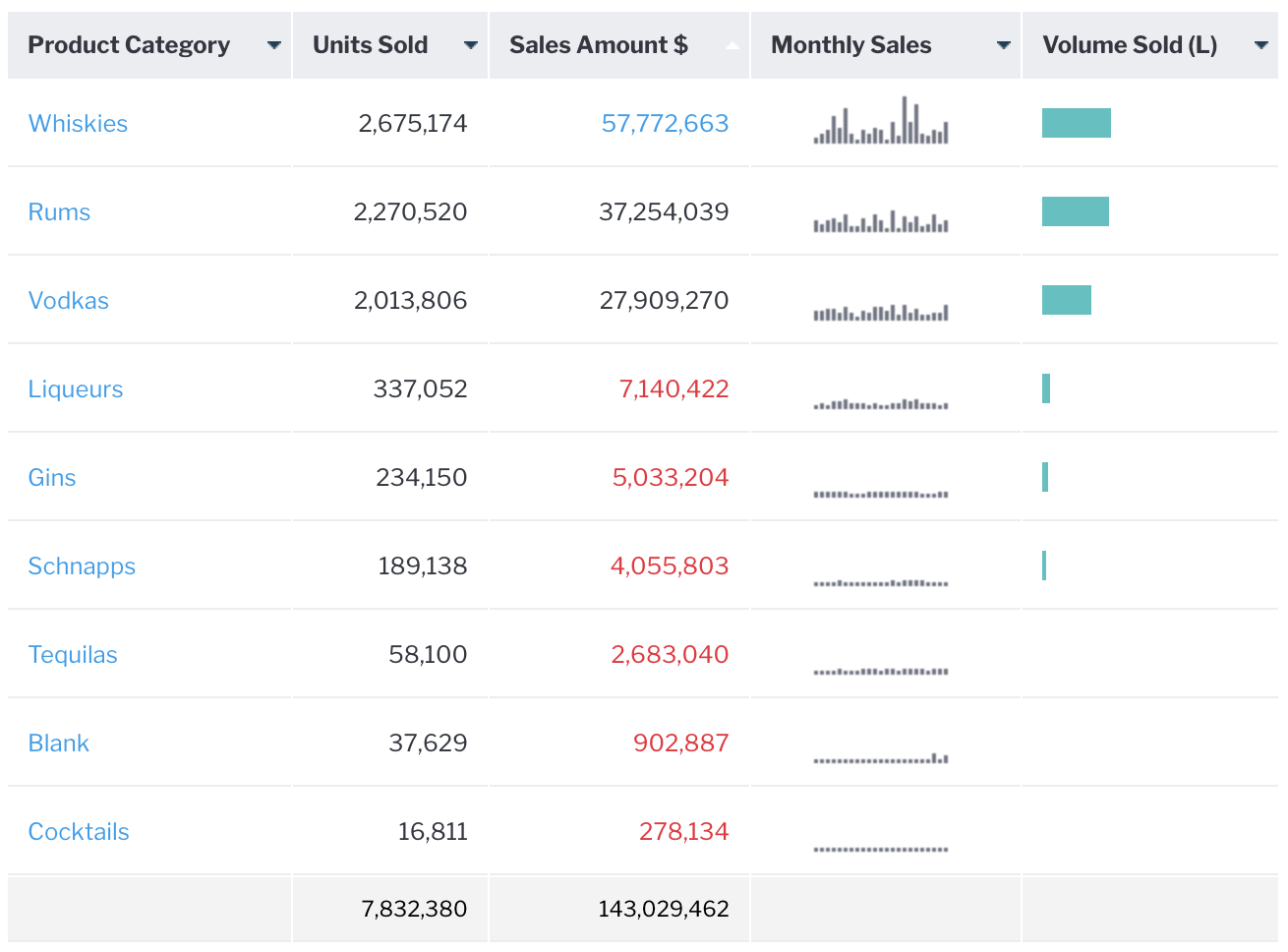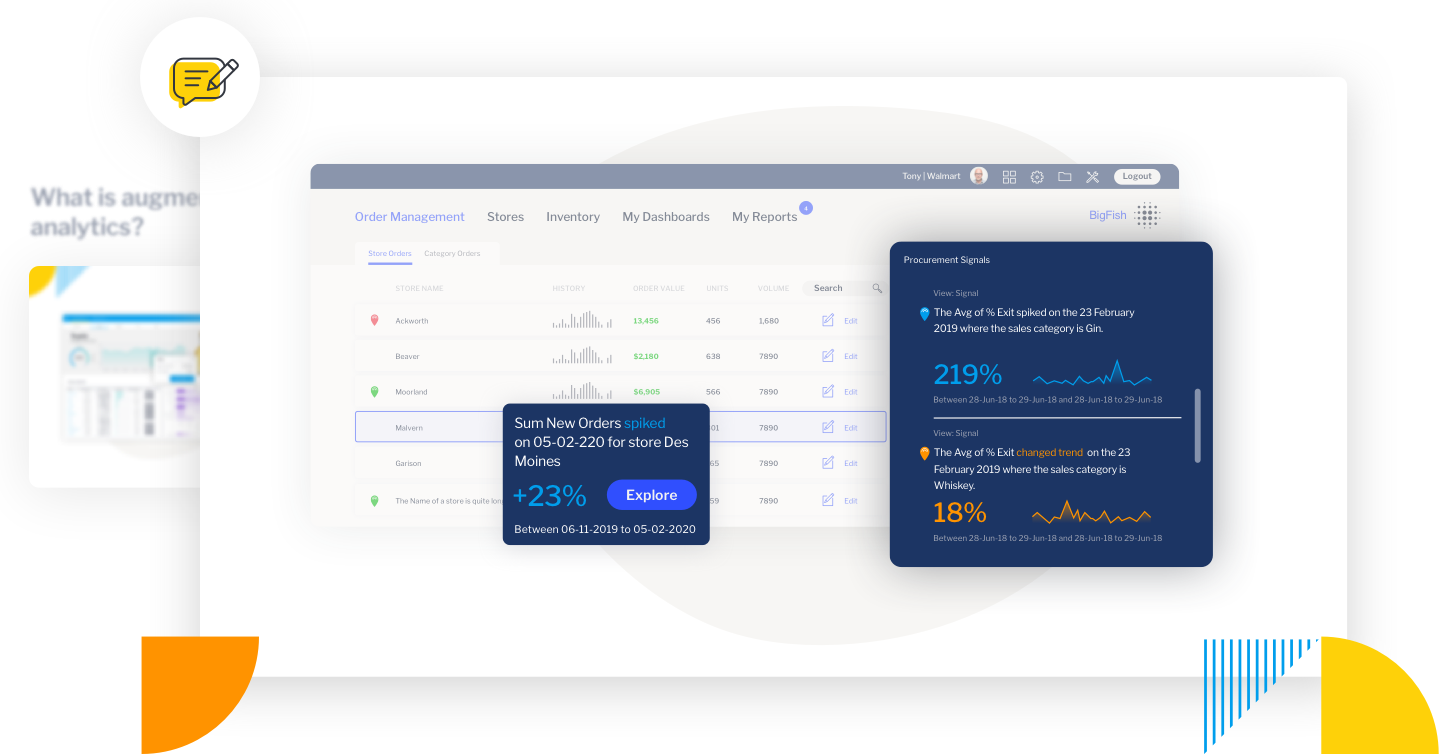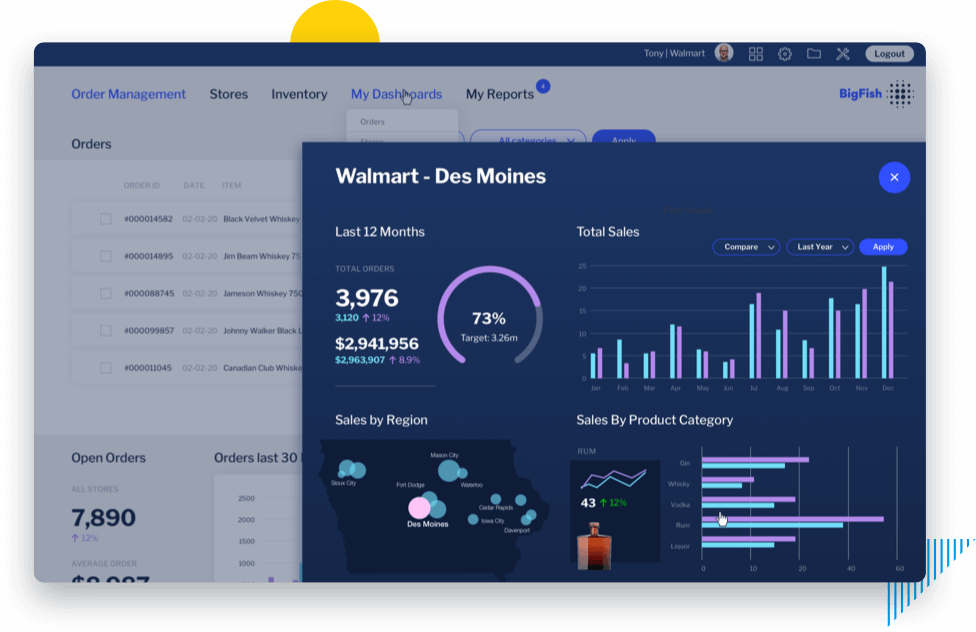Traditional operational reporting is often downplayed in the marketing of modern BI solutions in favor of newer features, such as augmented analytics. However, for many businesses, it continues to play a key role in the provision of information.
Yellowfin frequently speaks with prospects that list operational reporting as a critical requirement when buying an analytics solution. Despite the usefulness of the latest features, standard reporting capabilities is still an essential part of their BI checklist.
But why?
While operational reporting has been around for a long time and there are newer capabilities to consider, it's important to understand the reasons behind its lasting relevance and why it should continue to be an integral part of modern analytics solutions.
What is operational reporting?
Operational reporting refers to the production, distribution and consumption of reports that relate to current business activity, support the day-to-day operations of a business, and can be published and shared with the entire organization to read and glean insights.
Tabular reports, which display data in standard multi-column and multi-row formats, and banded reports (also known as pixel-perfect reports), which organize information into precisely controlled layouts with rigorous technical specifications, are examples of operational reports. Both follow a strict format in the way information is presented and findings are shared to meet specific compliance and regulatory requirements.

Operational reporting sits within Mode 1 analytics, a model defined by Gartner. Reporting solutions this category are parameter-driven, highly scheduled and distributed and tightly formatted, with data shared mostly in real-time, suiting use cases where business requirements are understood in advance and can be quickly identified from analysis.
Mode 1 reporting can take the form of raw data, or as mass produced reports for users in front-line operations that need real-time access to data to inform their minute-to-minute decision-making. Data comes from machine-based, operational and transactional data sources, and it’s often used in areas such as customer service, manufacturing, and sales.
Learn more: How to build Operational Reports in Yellowfin
Mode 1 Operational Reporting vs Mode 2 Modern Analytics: What's the difference?
Mode 1 reporting focus on providing granular data in real-time for a low-level view of the most immediate areas of need, so your users can take action faster in the short-term. However, for a deeper view of organizational performance or for long-term decision-making it may not be the most optimal solution for your users when used on its own.
This is where the powerful capabilities of Mode 2 analytics fill an important gap.
Mode 2 is defined by Gartner as a model of analytics that takes an exploratory, best-of-breed approach, focusing on providing users with new, innovative and visual ways to solve problems. BI solutions in this category support the entire analytic workflow, which includes data preparation, ingestion, insight generation and visual-based exploration and discovery features. They also enable users to discover insights in smaller, focused phases, using more advanced analytical techniques such as augmented analytics.
Modern Mode 2 solutions focus on being as easy-to-use as traditional Mode 1 products. They feature visual-based discovery features that enable users to quickly view their data as fast as they can with traditional Mode 1 reports, and provide the ability to generate rich visualizations, leverage automated alerting and gain assisted insights whenever additional detail may be needed, using the latest innovative analytics technologies.
While it’s clear Mode 2 solutions eclipse Mode 1 in capability, there are several factors behind why Mode 1 continues to persist in importance for many businesses today.
Why is operational reporting still used today?
The fact is operational reporting is a long established analytics consumption model.
There will always be users who prefer the Mode 1 style of operational reporting as that’s how they have always consumed their analytics, even as newer Mode 2 solutions and more advanced techniques such as contextual analytics continue to take the spotlight.
For many organizations, the traditional style of reporting of Mode 1 is at the core of their data culture and literacy, and how their business runs. There are also people who require constant streams of information in report form in order to do their jobs.
For example:
- Some Yellowfin customers in healthcare need to produce regular operational reports of high-risk patients, as they contain critical data for immediate follow up.
- Organizations in certain corporate sectors or areas of business are bound by very specific regulatory requirements in how their reports are built and presented.
In these particular cases, switching from Mode 1 operational reporting to a new analytics solution requires careful vetting to meet their specific standards, which isn’t easy.
At the end of the day, it's clear for these reasons operational reporting isn’t going away or being replaced just yet. This is why modern business intelligence solutions like Yellowfin offer both Mode 1 reporting in addition to the latest analytics tools of Mode 2.
How modern analytics solutions offer the best of both worlds
As Gartner advises, the holy grail is to have an analytics solution that offers both Mode 1 and Mode 2 capabilities in one platform. This opens up new ways and actions for users to trigger decisions and understand data, while supporting traditional reporting needs.
Operational reporting clearly still has an important place even in today’s world of BI, and it isn’t going anywhere. This is why Yellowfin combines both Mode 1 and Mode 2 reporting together in one package - to cater to organizations who want to modernize their capability with the latest analytics features, but still also need or prefer the familiarity and predictability that traditional operational reporting provides to their users.

Yellowfin supports the building of tabular and cross-tabular Mode 1 operational and management reports with pixel-perfect reporting and rich functionality available, such as dynamically sectioning reports, sparklines and a variety of conditional, column and section formatting options. Users can also export reports into several common formats such as Excel, PDF and paginated reports, and share them via email or deliver to an FTP server for mass consumption using predefined rules for scheduling and distribution.
When standard reporting features aren't enough, users also have the option of using the latest powerful Mode 2 analytics capabilities when they may require deeper insights, like automated alerting with Yellowfin Signals, the ability to share context-rich narratives with Yellowfin Stories, embed analytics directly in their transactional workflows leveraging Contextual Analytics, and visualized, instantly generated Assisted Insights.
Discover: Mode 2 Analytics with Yellowfin
Our breadth of capability across both Modes has been recognized by leading advisory firms like Gartner - discover Yellowfin for yourself today.


